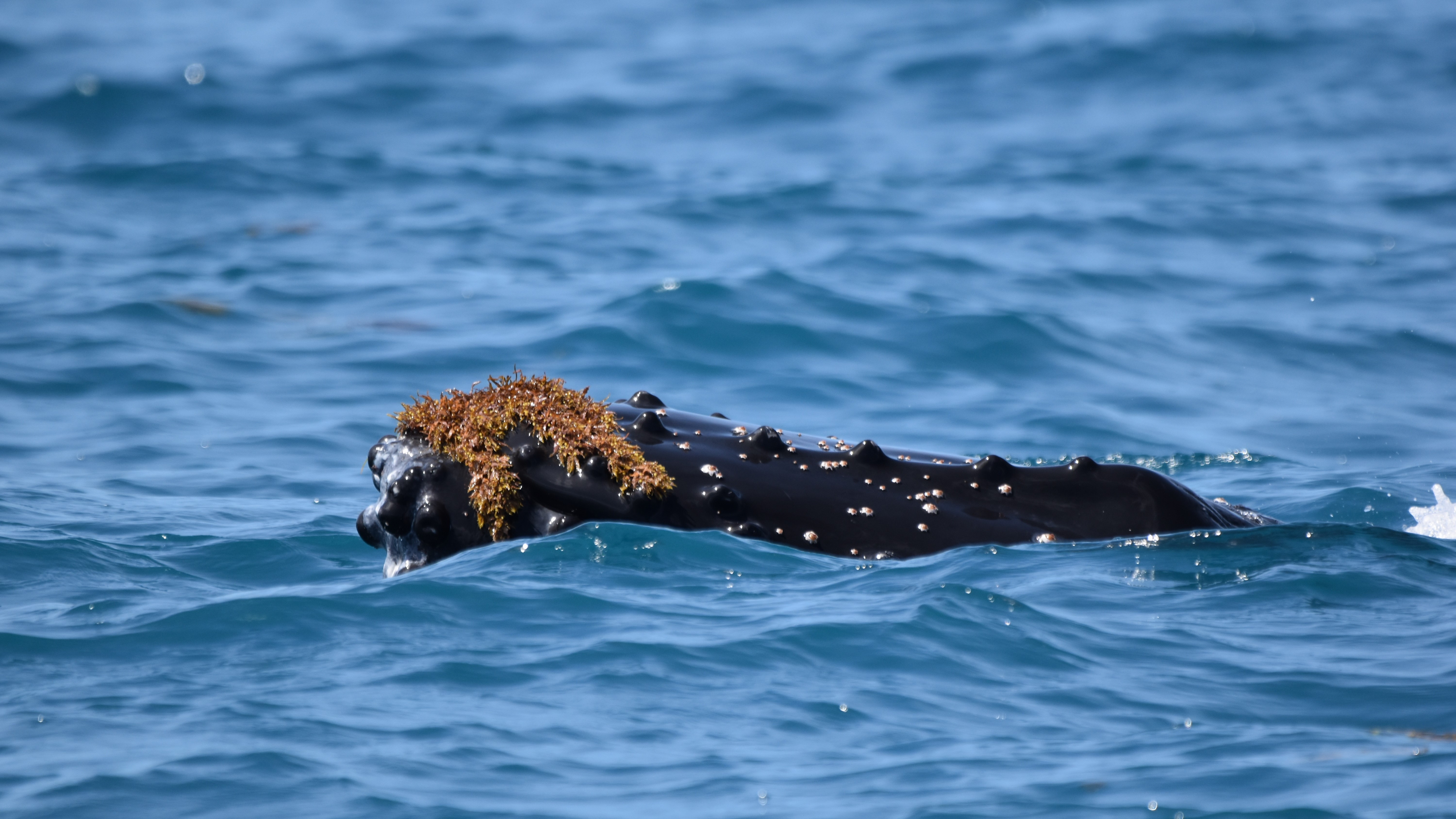Kelping is a 'global phenomenon' sweeping the world of humpback whales, scientists say
Humpback whales may enjoy rolling around in seaweed as a form of play, but "kelping" could also help maintain their skin health by removing parasites and bacteria.

Humpback whales frolicking in seaweed — a behavior known as "kelping" — is more widespread than previously thought and constitutes a "global phenomenon," new research has found.
Kelping was first observed in 2007, and scientists have described the behavior before — but only as isolated events. It turns out, humpbacks across the world enjoy the leafy caress of seaweed on their skin, both as a form of play and as a potentially soothing body scrub.
"It's something they do together as a social event or by themselves," study lead author Olaf Meynecke, a research fellow at Griffith University's Coastal and Marine Research Centre in Queensland, Australia, told Live Science. "They put the seaweed on their head and roll around in it; they try to move it around with their pectoral fins as well."
For the new study, researchers examined 95 social media posts documenting kelping in humpback whales, spanning across the North-East Pacific and North Atlantic to the west and east coasts of Australia.
Related: Orcas and humpbacks clash in a violent melee of breaching and biting
And while the term "kelping" suggests a preference for kelp — large brown algae that grow in relatively shallow waters near the shore — humpback whales (Megaptera novaeangliae) interact with different types of seaweed, Meynecke said.
"The whales don't seem to be that picky," he said. "Whatever was available in the region was what the whales interacted and played with."
Sign up for the Live Science daily newsletter now
Get the world’s most fascinating discoveries delivered straight to your inbox.

Humpbacks belong to a group of filter-feeding whales known as baleen whales, which are known to interact with objects in their ocean habitat. Humpback whales sometimes play with logs and driftwood, as well as with fishing gear and jellyfish, according to the new study, published Sept. 15 in the Journal of Marine Science and Engineering.
Seaweed probably feels soft and pleasant against their skin, Meynecke said. Along their jaws and around their head, humpbacks have sensory, highly innervated hairs that may be stimulated when they brush against seaweed.
"It's very clear from drone footage that the whales are targeting the kelp and sometimes leaving a pod of whales to go straight for the kelp," Meynecke said.
Kelping also may have therapeutic benefits, as it could help humpbacks shed parasites and bacteria that colonize their skin. "Just that rubbing will get rid of some of those little guys," Meynecke said. Seaweed is thought to have antimicrobial properties, but more research is needed to assess whether this applies to creatures that hitchhike on the whales.
Humpback whales sometimes bite down on seaweed and pull it underwater before letting go of it again, which may serve to scrub the insides of their mouths, Meynecke said. "They're grabbing it with their mouths — which is really interesting, because they're baleen whales that don't have teeth, and for them to bite something is not a natural instinct," he said.
But parasites could be beating humpbacks at their own game by latching onto patches of seaweed and jumping across when whales come for a scrub, Meynecke said.
This wouldn't be the first evidence of these whales doing skin care. Earlier this year, for the first time, researchers filmed humpbacks treating themselves to a full body scrub on the seafloor.
Playing in patches of seaweed could also enhance learning and strengthen social ties when several whales get involved, according to the study. "This is about coordination, mobility and the enjoyment of having something to play with," Meynecke said.
But climate change could ruin the whales' fun by shifting the distribution of seaweed, especially kelp, Meynecke cautioned. "Kelp has been under extreme stress with ocean warming," he said. The proliferation of species that feed on kelp, such as sea urchins, is also worrying, he added, because "they can turn an amazing, beautiful forest of kelp into a complete desert."

Sascha is a U.K.-based staff writer at Live Science. She holds a bachelor’s degree in biology from the University of Southampton in England and a master’s degree in science communication from Imperial College London. Her work has appeared in The Guardian and the health website Zoe. Besides writing, she enjoys playing tennis, bread-making and browsing second-hand shops for hidden gems.










